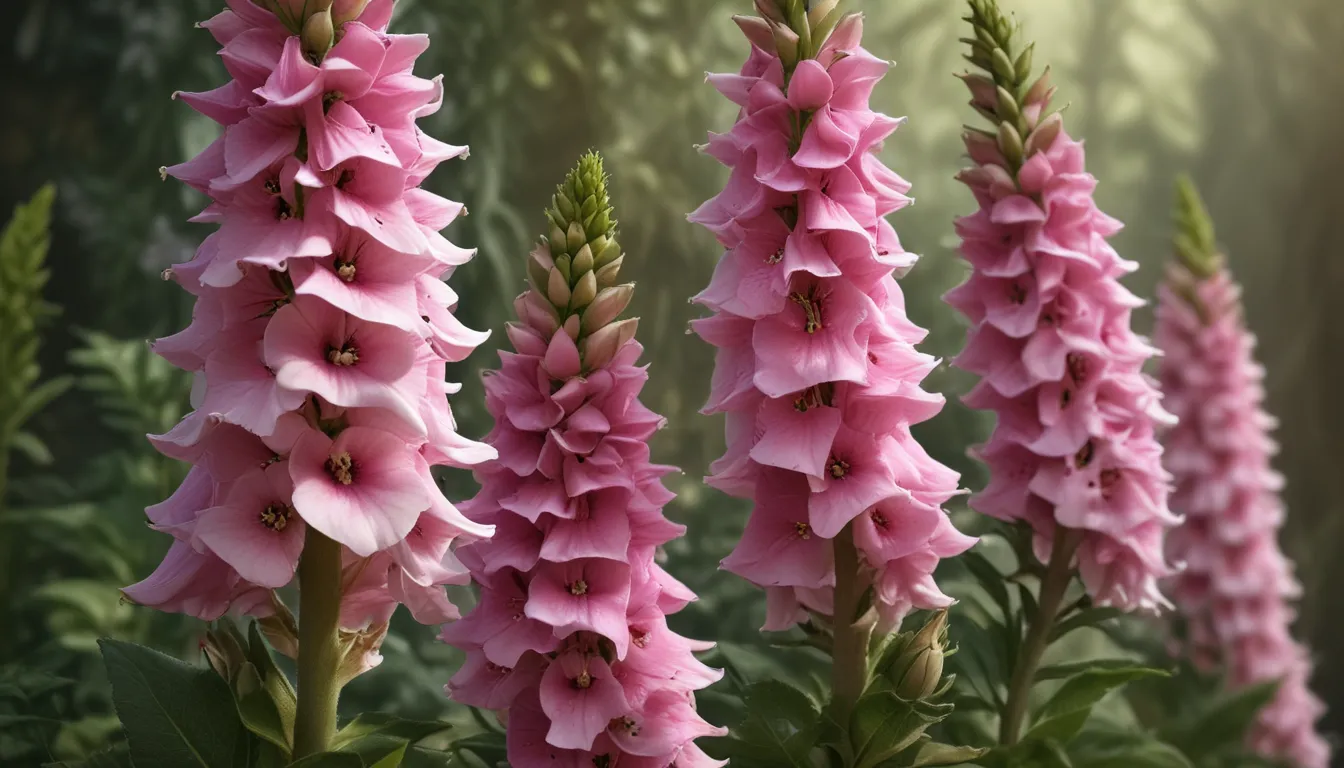The pictures we use in our articles might not show exactly what the words say. We choose these pictures to make you interested in reading more. The pictures work together with the words but don’t take their place. The words still tell you the important facts.
Digitalis purpurea, commonly known as foxglove, is a plant that has bewildered botanists and garden enthusiasts with its striking beauty and captivating allure for centuries. Originating from Europe, this biennial plant is renowned for its majestic spikes of bell-shaped flowers in shades of purple, pink, and white. However, there is more to Digitalis purpurea than meets the eye. This plant harbors a treasure trove of astonishing facts that will deepen your appreciation for the wonders of nature.
Key Takeaways:
- Foxglove, also known as Digitalis purpurea, has a rich history and folklore, attracting fairies and inspiring medicinal uses despite its toxicity. Its vibrant flowers also support local ecosystems. - Digitalis purpurea, or Foxglove, is a stunning biennial plant native to Europe and Asia. It prefers partial shade and moist soil, making it a charming addition to cottage-style gardens.
Unveiling the Mysteries of Foxglove
Foxglove, also known as Digitalis purpurea, stands tall with its signature spikes of bell-shaped flowers that never fail to capture the attention of nature enthusiasts. The name "Foxglove" itself has a fascinating origin, stemming from the old English words "foxes glofa," which translates to "fox's glove." This whimsical name emerged from the belief that foxes would use the flowers as gloves to aid in their stealthy hunting endeavors.
The Enchantment of Foxglove in Folklore and Mythology
Delving deeper into the realm of folklore and mythology, Digitalis purpurea unveils a rich tapestry of mythical symbolism and enchanting beliefs. In Celtic folklore, it was revered as a plant that attracted fairies, adding a touch of magic to the garden. Additionally, it was believed to possess mystical powers and was utilized in various folk remedies and potions, showcasing its cultural significance throughout history.
A Glimpse into the Life Cycle of Foxglove
As a biennial plant, Digitalis purpurea follows a unique two-year life cycle. In the initial year, it produces a basal rosette of leaves, setting the stage for its grand entrance in the subsequent year with tall flower spikes. After flowering, the plant disperses numerous seeds to perpetuate its life cycle, ensuring its continuity in the garden ecosystem.
The Dual Nature of Foxglove: Beauty and Toxicity
While Digitalis purpurea captivates with its beauty, it conceals a potent secret within its structure. The plant contains cardiac glycosides, compounds that render it highly toxic if ingested. Caution is advised when handling Foxglove, underscoring the importance of respecting its toxicity and seeking medical guidance if needed.
Unveiling the Medicinal Marvels of Foxglove
Despite its toxic nature, Digitalis purpurea harbors components that have been harnessed for medicinal purposes. Renowned for its cardiac effects, the plant has been utilized in traditional medicine to treat heart conditions. Its historical significance in inspiring modern heart medications showcases the duality of this remarkable plant.
Foxglove: A Beacon for Pollinators
The vibrant tubular flowers of Digitalis purpurea, adorned in shades of purple, pink, and white, serve as a beacon for pollinators such as bees and butterflies. The intricate design and colors of the flowers attract these essential pollinators, contributing to the rich tapestry of local ecosystems and highlighting the plant's ecological significance.
Embracing Foxglove’s Origins and Preferences
Digitalis purpurea traces its roots to Europe and parts of Asia, thriving in regions that offer partial shade and moist, well-draining soil. This preference for specific environmental conditions makes it an ideal candidate for woodland gardens or shady borders, adding a touch of elegance to natural landscapes.
Flourishing in Cottage-Style Gardens
The stately spikes of Digitalis purpurea find a perfect home in cottage-style or wildflower gardens, infusing vertical interest and charm into the landscape. With their vibrant blooms and delicate texture, these plants create an enchanting ambiance that complements the romantic allure of cottage gardens, showcasing their versatility in garden design.
Harnessing the Self-Seeding Nature of Foxglove
Digitalis purpurea possesses a propensity for self-seeding, enabling it to proliferate in garden settings if left unchecked. While this naturalizing tendency can enhance the garden's biodiversity, monitoring the plant's spread is crucial to maintaining a harmonious balance in the garden environment.
Unraveling the Marvels of Foxglove: A Conclusion
Digitalis purpurea, the captivating foxglove plant, encapsulates a world of wonder with its exquisite flowers, rich folklore, and multifaceted properties. Through our exploration of 11 remarkable facts about this botanical marvel, we have unveiled the allure and significance of Digitalis purpurea in the natural world.
As you encounter a foxglove plant in your garden or natural surroundings, take a moment to appreciate its timeless charm and remarkable attributes. Whether you are a dedicated gardener, a nature enthusiast, or simply curious about the wonders of the plant kingdom, Digitalis purpurea invites you to embark on a journey of discovery and appreciation for the beauty of nature.
FAQs: Unveiling the Truth About Foxglove
- Are all parts of Digitalis purpurea poisonous?
-
Yes, all parts of Digitalis purpurea contain toxic cardiac glycosides, including the leaves, flowers, and seeds. It is essential to handle this plant with care and keep it away from children and pets.
-
Can Digitalis purpurea be used for medicinal purposes?
-
Digitalis purpurea has a history of traditional medicinal use for heart conditions due to its cardiac effects. However, it should be utilized under the guidance of a healthcare professional.
-
How tall does Digitalis purpurea typically grow?
-
Digitalis purpurea usually reaches a height of 2 to 5 feet, although optimal conditions can foster growth up to 8 feet.
-
What type of soil does Digitalis purpurea favor?
-
Digitalis purpurea thrives in moist, well-draining soil rich in organic matter with a slightly acidic to neutral pH range. It flourishes in partial shade to full sun conditions.
-
Can Digitalis purpurea be cultivated in containers?
- Yes, Digitalis purpurea can be grown in containers, requiring ample space for its taproot to develop. Adequate drainage and regular watering and fertilization are essential for its successful container cultivation.
Embark on a journey of botanical discovery with Digitalis purpurea, the enchanting foxglove plant that encapsulates a world of wonder and beauty. Its remarkable attributes and captivating allure invite you to explore the intricate tapestry of nature, enriching your understanding and appreciation of the natural world. Explore the astounding facts of foxglove and embrace the timeless charm of this botanical marvel.






